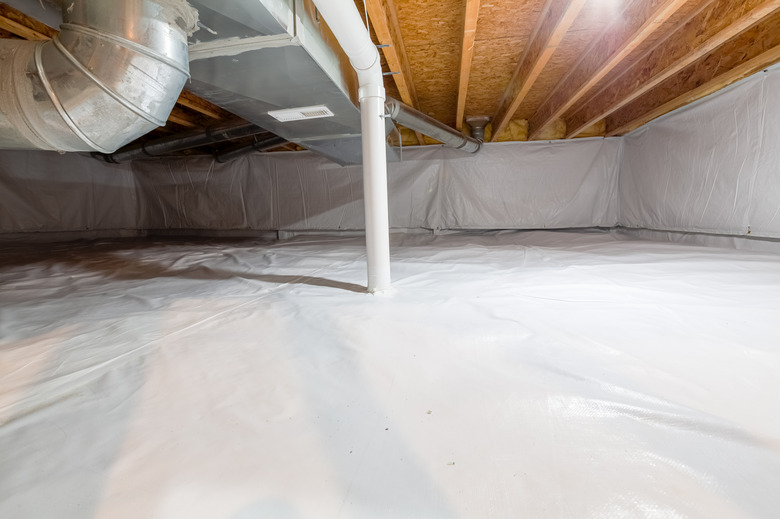How To Clean Up After A Sewage Leak Under A House
We may receive a commission on purchases made from links.
A sewage leak in the crawl space under your house is pretty disgusting, and it's also pretty dangerous. Raw sewage contains pathogens and parasites that can find their way into your home, making you sick or aggravating respiratory problems. It can also create mold issues and start to rot away parts of your home's foundation. A professional cleanup is often best, but you can do the job yourself if you're careful and follow a few safety precautions.
A Few Safety Tips
A Few Safety Tips
Because sewage contains contaminants, it's important to follow safety precautions. Check your coverall and safety gear every time you reenter the crawl space. Replace the gear if you find any rips, holes, or tears. Even with a respirator, sewage fumes pack quite a punch. Leave the crawl space and get some fresh air for at least five minutes out of every hour. Take more frequent breaks if you need them.
If you get hurt while working, leave the crawl space immediately and treat the wound. Even a small cut creates an opening for bacteria, so take even minor cuts and abrasions seriously. Clean them well and cover them completely before redonning your safety gear.
Things Needed
-
Chlorine bleach (if needed)
-
Lysol (if needed)
-
Buckets
How to Clean Up After a Sewage Leak Under a House
1. Find and Fix the Problem
The only thing worse than mopping up sewage in your crawl space is doing it twice. Whether it's a backed-up sewage pipe or a leaky one, you need to know that your problem is solved before you go through the effort of a cleanup. This may sound like a no-brainer, but it's easy to overlook when you're feeling overwhelmed by the mess and smell in your crawl space.
2. Suit Up
You need to make sure you protect yourself from the pathogens in sewage before you go near it. When preparing to clean your crawl space, you will want to put on a water-resistant coverall, vinyl gloves, rubber work boots, safety glasses, and a respirator. If feasible, wear old clothes under your coverall so you can just throw them away when the job is finished.
3. Empty Everything and Hang Plastic
If you've been using your crawl space for storage, you need to remove those items. You can disinfect nonporous items by soaking them in a bucket filled with 1 gallon of water and 1/4 cup of chlorine bleach for one minute. After soaking the items, wash them with warm, soapy water and rinse well. It's best to throw away porous items, but you can try spraying them with Lysol if they're not soaked through.
Once you have emptied the crawl space, hang plastic on the ceiling of the crawl space. This will prevent mold and other pathogens from migrating into the house above while you work.
4. Suck Up the Wet Stuff
Use a submersible pump or a shop vac to pump out all of the liquid waste. Remember that you're dealing with raw sewage, so you can't just pump the waste into a storm drain or let it run into your yard. You'll have to collect the sewage in buckets and then empty them into your toilet. Do not pour raw sewage down sink drains and other gray water plumbing structures.
5. Clean Out the Solid Waste
Not all of a sewage spill is comprised of water. To get rid of the solid waste, shovel it into thick plastic garbage bags and take them to a waste processing facility. If your crawl space is large, you can lay plastic on the ground for an added layer of protection in areas where you're not digging. You can then move the plastic as you go.
6. Treat and Ventilate
When you've removed the sewage from the crawl space, sprinkle the soil with powdered lime and work it in a bit. The lime will help dry the area and eat away at any remaining organic material. After working in the lime, set up a waterproof fan to finish drying the crawl space. It's best to use a waterproof unit designed for outdoor use.
